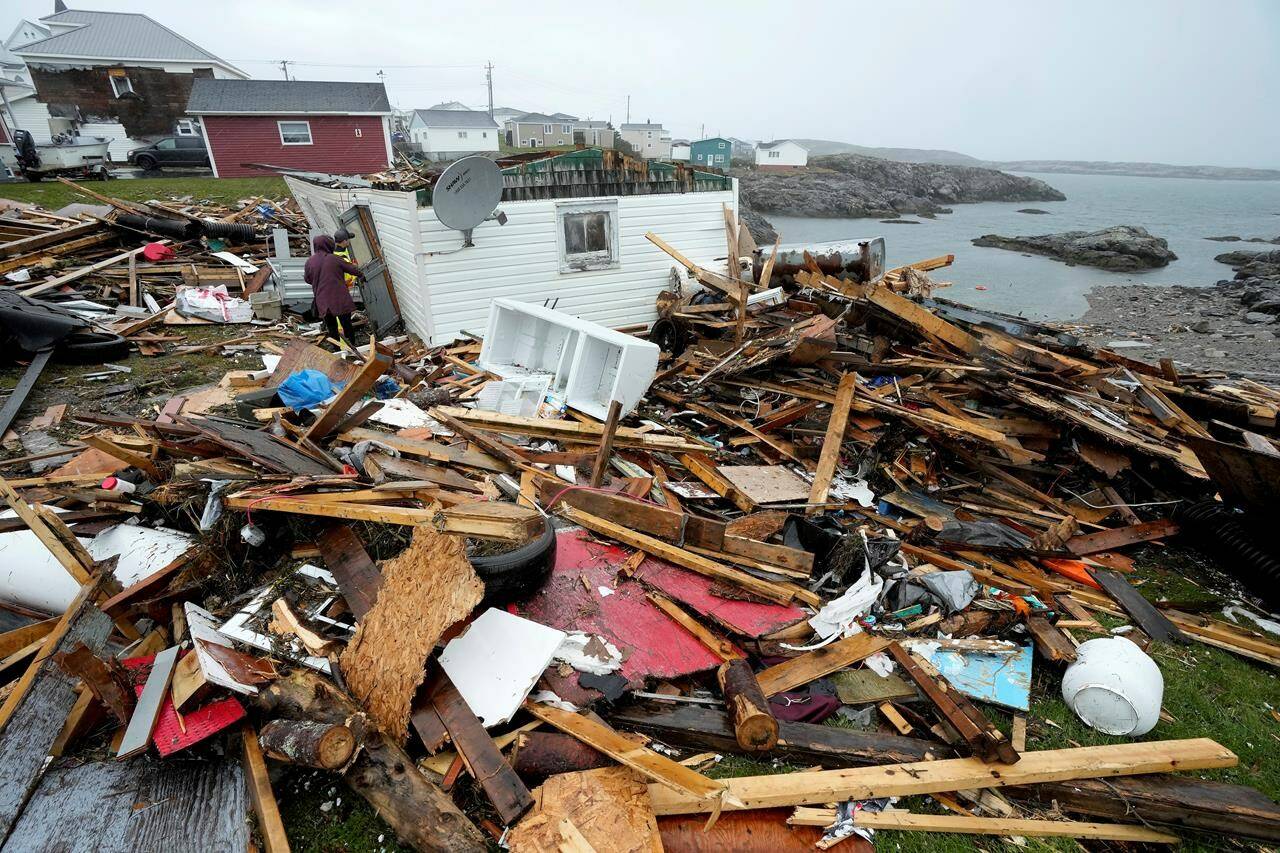Jocelyn Gillam knows she’s lucky to be alive after coming face-to-face with the post-tropical storm that destroyed part of her southwestern Newfoundland town and nearly swept her away in a surge of rushing water.
Gillam was standing near her home in Port aux Basques on Saturday morning when a storm surge hit, sweeping her off her feet and dragging her underneath a Jeep as she clung to the undercarriage for dear life.
The 61-year-old said she’d been chatting with family and neighbours when she turned her head and “saw Fiona coming.”
“It was brown, it was white, it was angry,” she said in a phone interview. “You could see she was coming with a vengeance.”
Post-tropical storm Fiona carved a path of devastation across parts of Atlantic Canada, leaving behind smashed homes, roads strewn with debris and hundreds of thousands of people without power.
But few places have been hit as hard as the 4,000-person community of Port aux Basques, where dozens of homes were destroyed and a 73-year-old woman died after being swept out to sea when a storm surge flooded her home.
Gillam remembers feeling the water rising as she struggled to hold on to the Jeep and her brother-in-law fought against the current to reach her.
“He came up but he couldn’t find me because there was so much water,” she said. “I was down under the water so, so much.”
She said her brother-in-law called for help, and he and some neighbours were able to grab her when the water began to subside.
Gillam escaped with only a banged-up knee, and memories she says will live with her “forever and a day.”
“Last night I didn’t sleep a wink because every time I turn over, I could see the waves and then I could taste the water and I could smell it in my nose,” she said. However, she says she’s on the mend and feels lucky that her home wasn’t damaged.
Many in her town weren’t as lucky.
On Monday, residents escorted by provincial response crews sorted through piles of debris in the pouring rain to salvage what they could from what remained of their homes.
One house perched on the edge of the rocks was missing an entire wall, its kitchen table and cupboard fully exposed on the sagging wood floor. About 30 metres away, another house was almost flattened, its roof and side wall missing. Nearby, a stuffed animal and blanket with Pixar “Cars” characters lay under splintered wood.
Premier Andrew Furey visited Port aux Basques and nearby communities Monday and compared the devastation in southwest Newfoundland to disaster zones where he has worked as a medical doctor.
As of Monday afternoon, he said, at least 80 homes were destroyed or structurally damaged in Port aux Basques alone — but the number could rise as officials continue to take stock of the damage.
“For every roof that’s floating in the ocean, there’s a family, there are stories and there are memories attached to that piece of infrastructure, and that’s what’s heartbreaking,” he told reporters.
He said officials were still working with the federal government about where to deploy Armed Forces members and other federal aid that has been offered.
Andrew Parsons, the provincial legislature member for Burgeo-La Poile, told the briefing that the immediate focus of relief efforts is ensuring people have shelter, food and clothes. While an emergency shelter was made available, he said all those who have been displaced are staying in hotels or with family.
The longer rebuilding effort will take more time, and will involve co-ordination and aid from the federal government. “We don’t have all the answers right now, but we’ll get there, and we’ll have everybody’s back throughout this entire ordeal,” he said.
Furey said the government would be announcing a financial support package in the coming days that will help those whose insurance won’t cover the damage.
The full extent and cost of the damage was still being assessed on Monday, Furey added. He said the Canadian Armed Forces were also determining where help is most needed.
Warrant Officer Bradley McInnis was among the first to arrive in Port aux Basques from the 5th Canadian Ranger Patrol Group, based in Gander, N.L., to report back to the military about areas in greatest need.
He paused briefly in the pouring rain on a street lined with damaged houses and debris to discuss the early stages of the work. As families passed by carrying belongings, McInnis said the scale of the destruction was only just sinking in.
“Parts of the town, it’s just a wasteland,” he said. “It’s unimaginable to think about where you’re going to start.”
—Holly McKenzie-Sutter, The Canadian Press
RELATED: Canadian military en route to assist with Hurricane Fiona recovery efforts
RELATED: Atlantic airports resume operations after hurricane Fiona triggers cancellations

